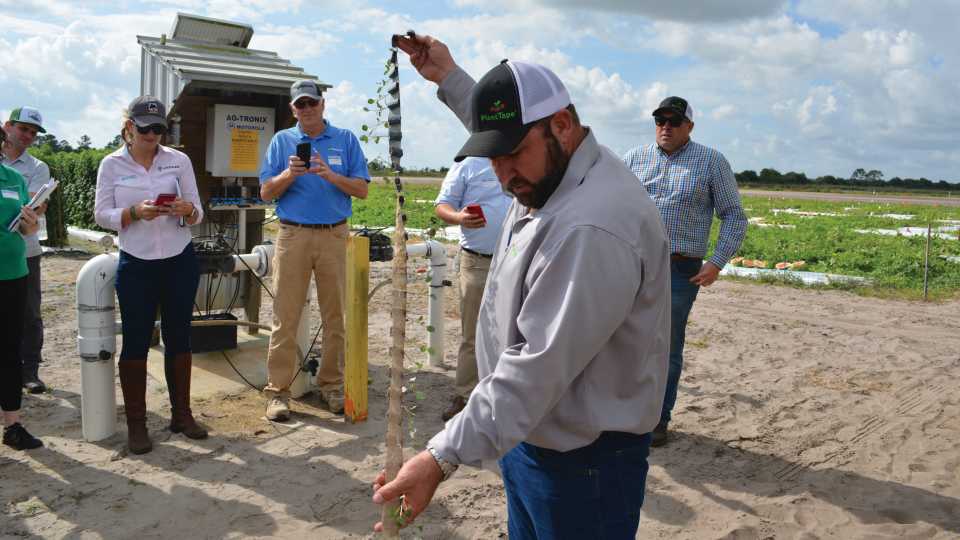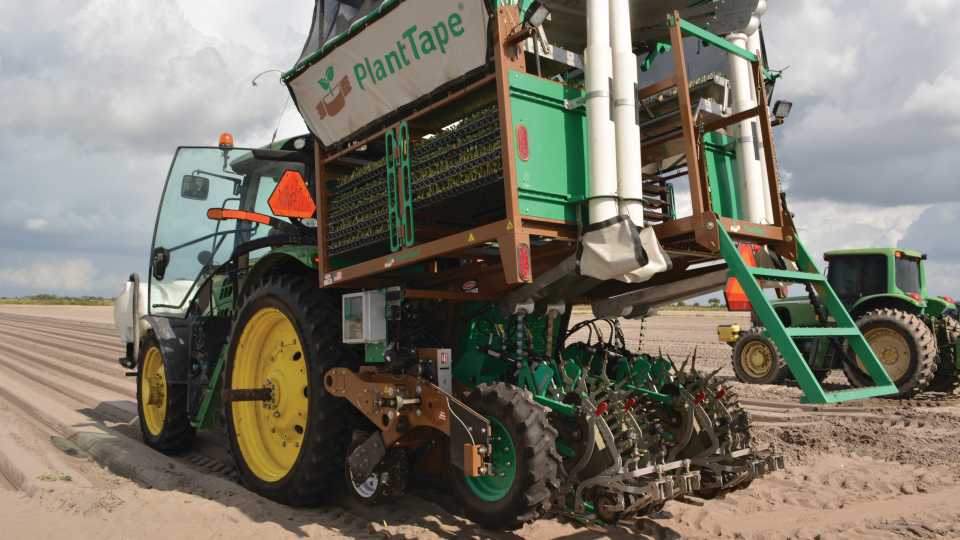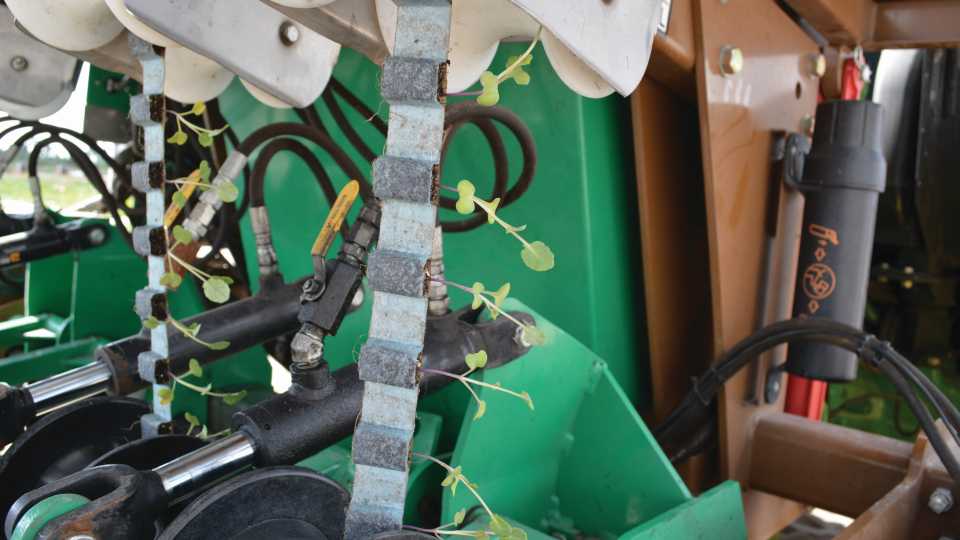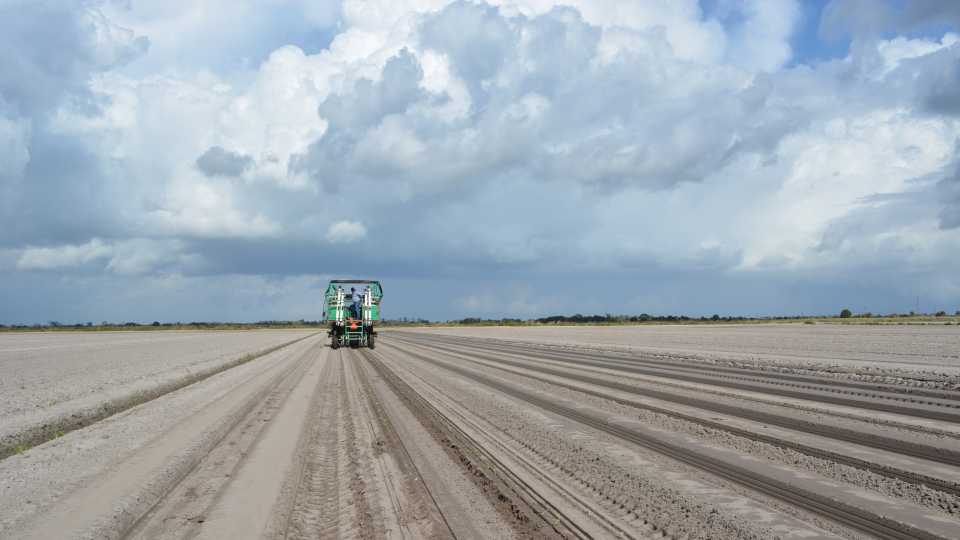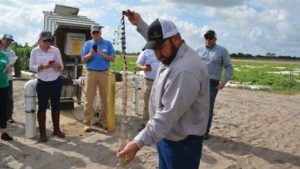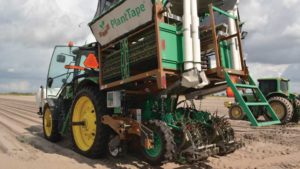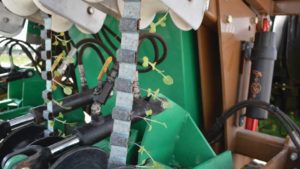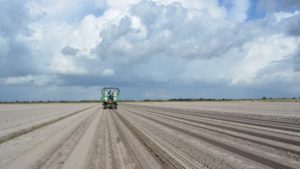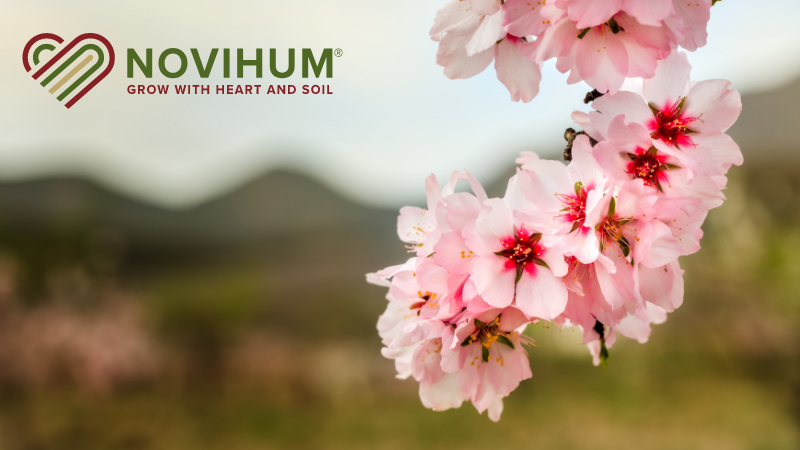New Planter Tech Grabbing Attention of Vegetable Growers
The drive toward automation from planting to harvest is underway in the specialty crop industry. Growers are taking matters into their own hands developing and commercializing new technology in response to a dwindling labor supply. One of those farms is California-based Tanimura & Antle (T&A), one of the largest leafy green growers in the country.
To further the company’s technical capabilities, they began investigating a Spain-based firm’s solution called PlantTape. Impressed with the technology and its potential to reduce labor and other benefits, T&A bought the company in 2014. Brian Antle serves as the company’s President and says, heading into its second season of commercial availability, PlantTape has been put through the paces and is ready for prime time.
Some of the benefits the technology offers include: it is faster than traditional transplanting; it holds more plants per tray than conventional trays; there is an 80% labor reduction; and it requires 97% less peat. Several Florida farms are running trials with the technology this season as word spreads about its efficiency.
How it Works
Like its name suggests, PlantTape utilizes a tape in which seed are inserted along with a small amount of growing media. The peat and seed are sealed together and then arranged in a tray that will hold 810 plants versus 338 plants in conventional trays.
“It all starts at our factories where we bring in all the raw materials to make the tape,” Antle says. “Currently, we have two factories in California and one in Barcelona, Spain. We have a specialized seeder machine that places the seed in the tape and seals it all up.”
The company has a limited number of seeder machines, but plans to make more available closer to the growing regions where they are using the planter, including Florida.
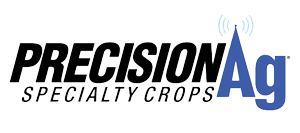 “At this point, the grower or nursery has to send us the seed, and we put in the seed and media in dry form,” Antle says. “Then we send it back to the grower or nursery where it is germinated prior to planting. We have had a lot of interest among growers in the Southeast, so we are looking at how we can get a seeder line down closer to the region.”
“At this point, the grower or nursery has to send us the seed, and we put in the seed and media in dry form,” Antle says. “Then we send it back to the grower or nursery where it is germinated prior to planting. We have had a lot of interest among growers in the Southeast, so we are looking at how we can get a seeder line down closer to the region.”
Beyond getting more plants per tray, nurseries can speed up the growing cycle for PlantTape transplants. Speedling Nursery is handling PlantTape transplants in Florida. According to company representatives, the PlantTape plants seem to be ready in approximately 25 to 28 days versus 35 to 42 days for the various conventional transplant crops.
“The reason we can shorten the nursery cycle is we are not relying on the plants for any structural strength,” Antle says. “In conventional transplanting, you are grabbing the plants out of the tray by hand, so the plants need to be long enough to grab and have the roots formed enough to pull out of the tray. This system does not require that because the tape is holding the media and the plant securely. You can go with plants up to 4 inches, but you don’t have to. That gives you flexibility when planting, especially when weather becomes a factor.”
Labor Savings
Antle says trays are transported to fields like conventional planting and loaded onto the platform of the PlantTape machine, which is pulled behind a tractor. On the machine, modules move the line of tape and place it in the ground at the desired spacing. The machine can carry up to eight modules, and its outside wheels can be moved 64 to 84 inches to accommodate bed sizes.
So how many people are needed to plant using this technology? Antle says they are confident three people can plant about 2 acres per hour. That is one person driving the tractor and two people on the platform.
“We figure one person can handle three module lines of plants,” he says. “The only job they have is refreshing trays and clipping them on. It is a much more relaxed job for the worker compared to handling each plant in a conventional planter.”
Other Benefits
To power more opportunities for farm automation, Antle says the foundation starts with a uniform, consistent stand. He says the PlantTape machine helps achieve this goal.
“With PlantTape, you can open the door to mechanical weeding,” he says. “When you direct seed, the weeders have a hard time telling the difference between the crop and the weed because they are generally the same size. With a uniform transplant stand, the weeder should be able to tell the difference.”
The company also is looking at spot spraying chemicals and fungicides when planting rather than spraying down the whole bed. The planter would spot spray directly where the plant is dropped. Antle adds the consistency and uniformity of the transplants will lead to mechanical harvest as technology evolves.
“The goal everyone is working toward is automating harvest,” Antle says. “That is the Holy Grail, but to get there you have to start somewhere, like PlantTape. “For example, consistency in the height of plants will dictate whether a mechanical harvester will slice through a head of lettuce or cut it off at the right spot.”
Another benefit is that the planter is fairly easy to maintain. “Outside of a small computer that controls the hydraulic pump, the beauty of this machine is pretty much everything else is nuts, bolts, chains, and gears,” Antle says. “The types of things field guys know how to maintain and fix.”
Next Steps
Antle says the company is building its 35th machine, and there is growing interest in the labor-saving planter. Trials are underway in growing regions throughout the U.S., Mexico, and Europe. In addition, PlantTape is conducting research on the viability of applying the technology to plasticulture crops.
“In our own internal applications, we have planted more than 40,000 acres with this machine, so we have seen everything that can go wrong, go wrong and have fixed those issues,” Antle says. “So we are confident and ready to get it out in front of growers to show how
it performs.”





